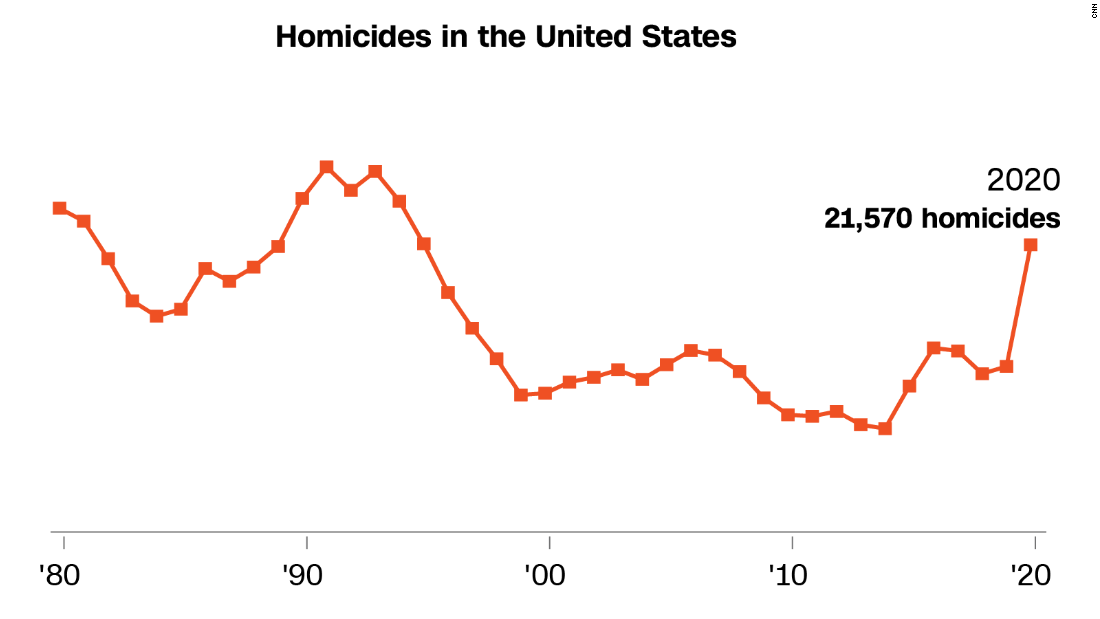Murders rose sharply in 2020 but data is lacking across much of the country
The report, which is on par with preliminary numbers that were reported over the summer, also shows a 5% increase in violent crime between 2019 and 2020. Overall crimes reported by the FBI decreased by about 6% between 2019 and 2020.
There were more than 21,500 murders last year, a total not seen since the mid 1990s. The murder rate in 2020 was about 6.5 per 100,000 people, about 40% below what it was in the 1980s and 1990s, when homicides peaked in the United States.
According to the report, the number of homicides last year began to escalate during the summer months, peaking in June and July and remaining at high levels after that.
The report is the most official, standardized look at crime across the United States, but data from the Uniform Crime Report paints a picture that is far from complete. Each year, the FBI collects crime statistics from law enforcement agencies across the country to create its annual report, but agencies are not required to submit their data. Many agencies do not participate — in 2020, about 15,875 agencies out of more than 18,000 submitted their data to the FBI — a participation rate of 85%.
There is also a significant lag time between when the data is released and the timeframe it covers. The FBI released its full report nine months after the end of 2020, and while its preliminary report showed a 25% increase in homicides in 2020, several large cities did not submit data, including New York, Chicago and New Orleans.
However, it’s more difficult for agencies to collect and report data with this level of detail, which will likely impact the number of agencies who participate — less than 10,000 agencies reported NIBRs data in 2020.
The FBI began publishing national quarterly crime reports last year, but has not done so for the first two quarters of 2021, stating that they require at least 60% of agencies to submit NIBRS data in order to publish quarterly data. Fewer than 10,000 agencies have reported NIBRS data this year, covering just 53% of the US population, according to the FBI.
The switch to NIBRS comes at a time when rising murders indicate an even greater need for consistent data collection at the federal level.
While the UCR report for 2021 will likely not be released until mid-to-late next year, other organizations tracking homicides across major cities believe that there will likely be more murders this year than last. However, the rate of increase in homicides does appear to be slowing.
The NCCCJ’s report from the first quarter of 2021 found that homicide rates were down from their peak of summer 2020 but were still above what they were in the first quarter of previous years. Data from consulting company AH Datalytics, which tracks year-to-date homicides across 87 major cities, shows a 10% increase in homicides so far between 2021 and 2020 — a reduction from the 30% increase observed in 2020.
Both the UCR report and the NCCCJ study also found that the decrease in overall crime has continued into 2020, following a nearly two-decade trend of decline in the United States. The decrease includes many forms of property crime including robberies, residential burglaries and larceny, which lowered during the onset of the pandemic last year.
This story has been updated with additional details.
![]()


